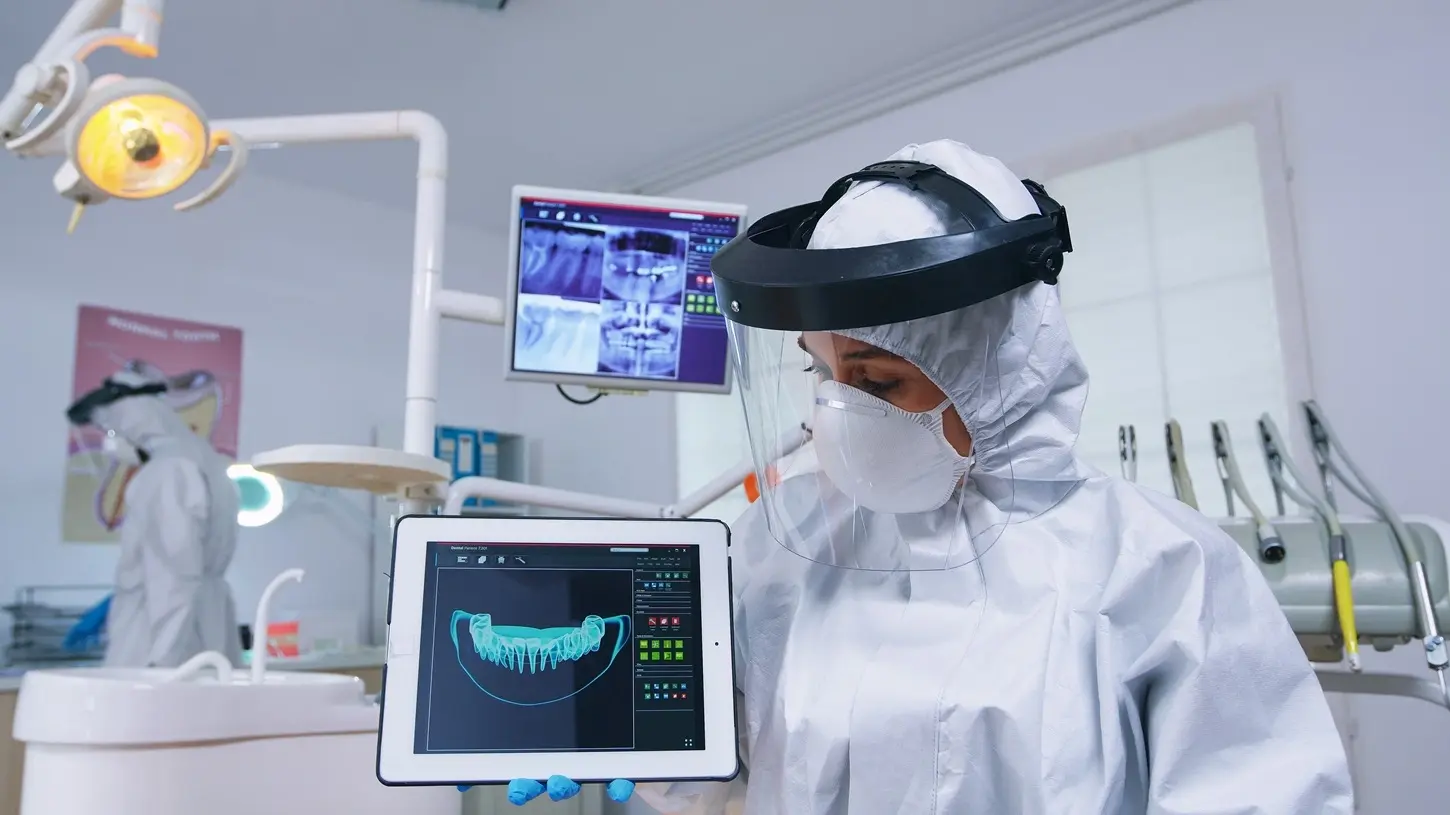You’re sitting at the dentist’s office, staring at the modern light fixture above you. Just as you wonder why dental offices always smell like mint, your dentist says:
“The AI has detected a suspicious spot on your X-ray.”
Wait, what? The AI? Who or what exactly has taken a look inside your mouth? And more importantly – is a robot about to wield the drill?
Relax. Your dentist or orthodontist is still in charge, but they now have a digital assistant that supports them with lightning-fast analyses and unwavering precision in diagnostics.
From Gut Feeling to Super Intelligence
Dentists have years of experience. They look at an X-ray and know where to focus. But our brains aren’t designed to compare millions of images.
AI, however, sifts through vast amounts of data, identifies patterns, and compares your X-ray with thousands of others, detecting emerging problems early. This means: earlier detection, better planning, more targeted treatment.
But does this mean dentists will soon be obsolete?
No Robots with Drills – But Brilliant Assistants
AI can analyze X-rays, detect dental diseases earlier, and even suggest treatment plans. But when it comes to handling the drill or administering a shot without causing pain – no, that remains (thankfully) a human art.
And in orthodontics? AI analyzes tooth movements, predicts jaw development, and helps adjust braces or aligners with even greater precision. Remote treatment monitoring is also possible: Modern systems can analyze progress through apps and notify the practice if adjustments are needed. The dentist still has the final say.
AI as an Invisible Helper – What It Means for You
Perhaps you’ve already encountered AI in dentistry without even realizing it. Modern dental offices like LifeDent are already using AI in many areas. Here are some examples:
X-ray Analysis: AI detects the finest signs of cavities or misalignments that even a trained eye might miss.
Treatment Planning: It can make treatment suggestions or propose optimizations – based on millions of cases.
Dental Prosthetics: Digital 3D models make crowns and bridges more accurate than ever before.
Sounds impressive? It is! But like any technology, AI raises some important questions – especially regarding data protection.
AI in Dentistry: Brilliant, But Not Without Challenges
As promising as AI in dentistry may be, it does come with its challenges.
One of the biggest issues: data. AI needs vast amounts of high-quality, diverse data to work accurately. If the data is flawed or too one-sided, the analysis can be skewed.
Then there’s data protection. X-rays and treatment data aren’t selfies for social media but highly sensitive information. Clear regulations and secure systems are essential for patients to trust that their data is well protected.
Implementing AI in practice isn’t always straightforward either. Many AI systems are still in the testing phase, and not every dental office is equipped to handle them technically. Dentists need training to use the technology effectively – and to interpret its results correctly.
And then there’s the issue of acceptance. Many patients are skeptical about the idea of an AI making their diagnosis. The concern that machines will eventually have more say than humans is real.
Here, transparency helps: AI isn’t taking any jobs away from dentists – it’s simply making them more precise and efficient.
In short: AI has enormous potential, but it’s not a self-runner. The technology is there, but now it’s about integrating it safely and sensibly into everyday practice.
AI at the Dentist – Curse or Blessing?
Let’s be honest: Very few people actually enjoy going to the dentist. But if AI can help make treatments faster, more precise, and more comfortable – why not?
Despite all the advancements, there are still things AI (still) can’t do:
- Personal Care: No algorithm can replace human empathy. Especially for anxious patients, a compassionate doctor is irreplaceable.
- Creative Problem-Solving: AI detects patterns but doesn’t come up with innovative solutions for complicated cases.
- Experience & Instinct: Sometimes an experienced orthodontist is better than any statistic because they can intuitively assess situations.
Conclusion: Human & Machine – A Dream Team!
The future of dentistry is smarter, more precise, and more digital. But AI won’t replace dentists and orthodontists at LifeDent. Instead, it will support them, making their work more accurate, efficient, and pleasant for you.
Your smile will still be in good (human) hands – just with a bit of smart assistance!

